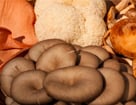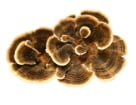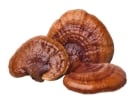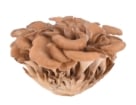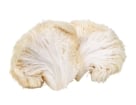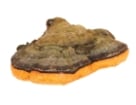
Medically reviewed by
Dr. John Rackham
Written by Clay Steakley
Updated on February 24th, 2022
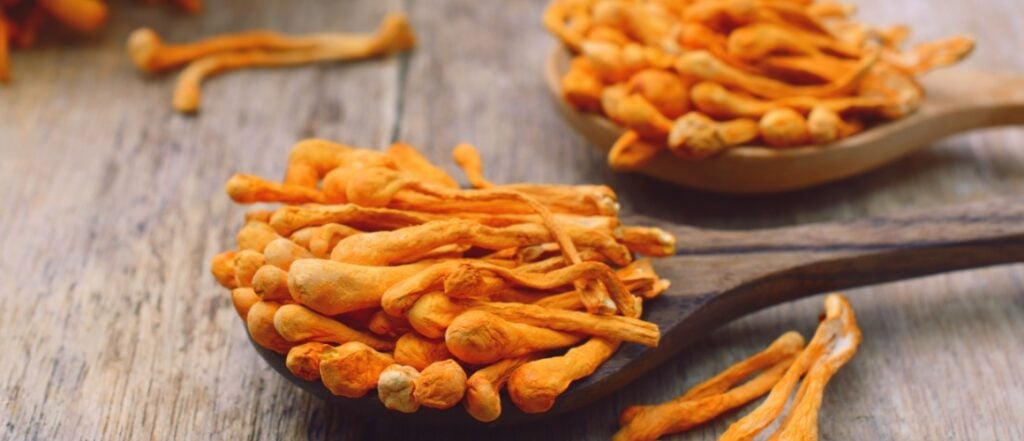
In the funky world of fungi, few adaptogens have a more unusual backstory, or more therapeutic potential, than the humble Cordyceps. Relied upon for centuries to reportedly boost energy, fight aging, and battle chronic illness, this fungus may be at the forefront of scientific study, but it’s an old standby in holistic medicine.
So, what does Cordyceps mushroom do, what’s an adaptogen, how can this mushroom help us, and does it work with CBD? And what’s this unusual cordyceps backstory we’re talking about?
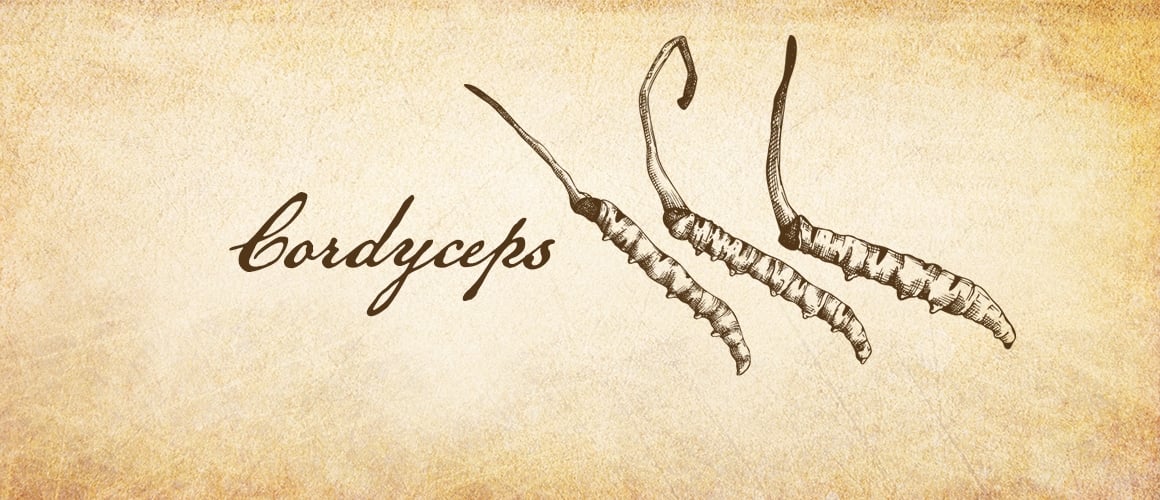
Cordyceps Mushrooms: The Origin Story
When we think of harvesting fungi for medicinal purposes, we typically imagine finding growths on trees or in remote mountain caves. We don’t really think about … Chinese caterpillars.
Cordyceps is actually a parasitic fungus that grows on the larvae and bodies of insects, like ants and caterpillars. Cordyceps sinensis famously grows on the larva of the ghost moth, later sprouting straight from the heading of the caterpillar itself.
Caterpillar-rooted Cordyceps mushrooms have been traditionally harvested high in the Himalayas for centuries and ground up (caterpillar and all, apparently) to create traditional medicine.
Okay, before we go further, you should know that contemporary Cordyceps, used for therapeutic purposes and scientific study, are grown in labs on rice. So, you’re not eating caterpillar heads in your mushroom blend, we promise.
Incidentally, the sinensis in Cordyceps sinensis means “from China” in Latin.
The Therapeutic Benefits of Cordyceps Sinensis
You’re probably wondering what could possibly be so great about this creepy little mushroom that people would harvest bugs to consume it?
While ancient medicinal herbs are often passed down with some exaggerated ideas of their potency, claiming to cure impotency or stop aging, there is often some truth deep in the legend.
With Cordyceps, that truth lies in its many health-boosting properties, from serving as a natural antioxidant, to managing blood sugar and helping us handle stress.

Cordyceps as Antioxidant Source
Much of the anti-aging reputation of the humble Cordyceps is rooted in its power as a natural antioxidant. Antioxidants fight damaging atoms called free radicals that cause oxidative stress to our DNA, cells, and skin, in addition to contributing to multiple disorders and illnesses.
When an antioxidant like those found in Cordyceps encounters a free radical, it passes an electron on to it, balancing and effectively neutralizing it.
While there have been a multitude of promising studies on the anti-aging power of Cordyceps, they’ve mostly been done on mice. There’s no study effectively saying natural Cordyceps sinensis fights aging in humans, but we do have centuries of traditional uses[1] to draw from.

Cordyceps as Energy Booster
Cordyceps is well-regarded as an energy booster thanks to its ability to increase our production of a molecule called adenosine triphosphate, or ATP[2]. This tiny powerhouse captures energy from food molecules as they’re broken down, and carries it to other cells, driving a host of important cellular processes in our bodies.
Cordyceps and ATP can help our bodies use oxygen more efficiently and boost our exercise performance, even as we age[3]. However, this doesn’t appear to have the same effect in trained athletes.

Cordyceps as Anti-Inflammatory
Studies have shown that Cordyceps has incredible potential as a natural anti-inflammatory[4], reducing inflammation in skin, muscles, respiratory systems, and more. This has also only been studied in animals, so we can’t make any claims about the effectiveness of Cordyceps as an anti-inflammatory on humans.
But, we do know that natural anti-inflammatories can be effective against both short-lived acute inflammation and long-lasting chronic inflammation. You’ve probably used anti-inflammatory medication before, such as ibuprofen or naproxen for muscle pain, headaches, and so forth. These are in a medication class called nonsteroidal anti-inflammatory drugs or NSAIDs. These medications work well for the majority of people, however they do carry some risk, including stomach ulcers and increasing the risk of heart attack and stroke. If cordyceps proves to be successful in reducing inflammation without these risks, that could be a game-changer!

Cordyceps as Adaptogenic Mushroom
When it comes to combining Cordyceps with CBD, it’s the adaptogenic power of the mushroom that we look to. So, what’s that?
Adaptogens[5] are natural compounds that can help your body manage and adapt to stress, including biological, chemical, and physical stress. They were first named by the Russian scientist Nikolai Lazarev, who was studying ways to increase vitality in then-Soviet athletes and soldiers.
It turns out that mushrooms and fungi like Cordyceps, lion’s mane, reishi, and many others are packed with adaptogenic potential.

Cordyceps as Nootropic Mushroom
Another powerful attribute of Cordyceps and many other mushrooms and fungi is the potential to boost and hone cognitive function as a nootropic. There are a number of ways this seems to work, including stimulating growth and repair of nervous system cells, fighting brain cell inflammation, and maximizing the body’s use of oxygen as we mentioned above.
Although lion’s mane is the most famous nootropic mushroom, cultured Cordyceps sinensis has been found to have nootropic potential, as well.
These are only a few of the amazing potential benefits[6] of the Cordyceps mushroom. This mushroom has also shown potential to help with heart disease, to manage blood sugar levels for diabetics, and to fight tumors. Those are big ideas with even bigger, and thus-far inconclusive, scientific studies behind them.
When we combine adaptogenic mushrooms and nootropic mushrooms with the incredible soothing and therapeutic effects of CBD, we can create incredibly robust mushroom products to help us when we’re feeling stress, fatigue, and much more.
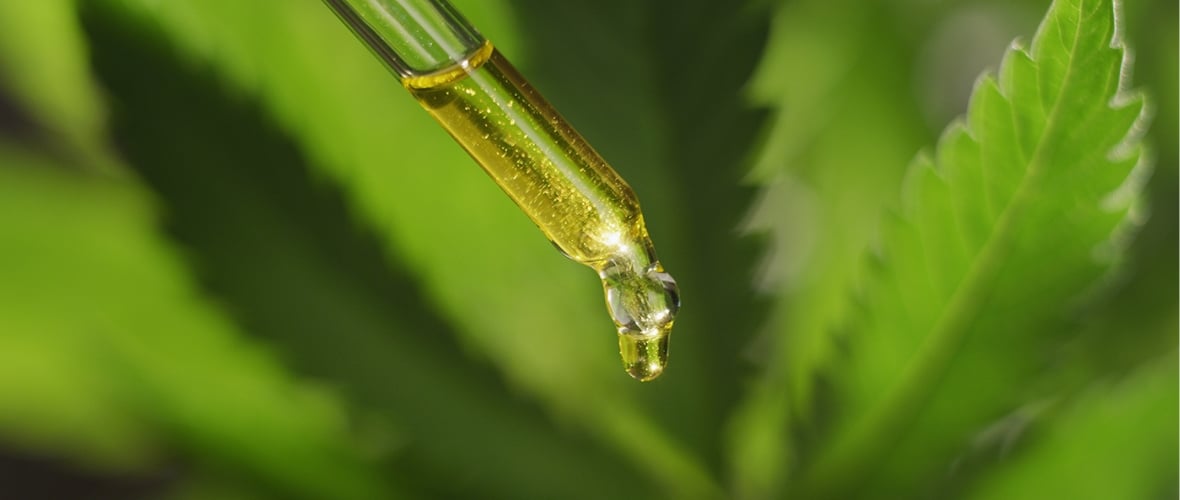
Cordyceps and CBD
How do we combine the adaptogenic power of the mushroom Cordyceps with the soothing benefits of CBD? Now that we’ve discussed how Cordyceps works, we should look at the same with CBD.
CBD is short for cannabidiol, one of hundreds of compounds found in the cannabis plant known as cannabinoids. CBD and other cannabinoids, like CBG, CBC, and CBN, interact with receptors in a system in our bodies known as the endocannabinoid system.
The endocannabinoid system is integrated with our central and peripheral nervous systems, as well as tissues and systems in our body that regulate mood, sleep, immune response, and more. When a cannabinoid interacts with a receptor in the endocannabinoid system, it imparts therapeutic effects.
Let’s look at how Cordyceps and CBD interact in our new product, Focus Mushroom + CBD Drops: CBG Energy Blend.
There are a few major ingredients and processes that help us make the most of Cordyceps’ adaptogenic properties in this product.
- Broad spectrum CBD is CBD oil that has filtered out the legally allowed trace amounts of THC, but retained most of the other valuable cannabinoids present in cannabis hemp, including CBD, CBG, terpenes, and flavonoids. When these are all present, the conditions are right for the Entourage Effect, which is a synergistic effect where each element present in the product modifies the effects of other elements, while also contributing to a more powerful overall experience.
- CBG, also known as “the mother of all cannabinoids,” has been found to create what people describe as an energizing and focusing effect when combined with CBD and other supplements.
- Cordyceps, the star of this article, adds its adaptogenic ability to lower stress on body and mind. In addition, Cordyceps sinensis may increase energy, as we discussed above. It also contributes nootropic power to boost cognitive function.
- Two other adaptogenic mushrooms, lion’s mane mushroom and chaga mushroom, contribute their own stress-mitigating powers as well as protein, nutrients, and immune support.
When all these elements come together, they contribute to an incredibly balancing and energizing mushroom experience.
Psilocybin? Cordyceps vs “Magic” Mushrooms
Cordyceps sinensis is not a hallucinatory fungus. Cordyceps doesn’t possess the psychoactive, psychedelic properties of “magic” mushrooms or “‘shrooms.” Similarly, CBD products are not psychoactive and do not cause a euphoric experience.
In short, all the ingredients we use, from CBD to mushrooms, are chosen for their wellness benefits and not to get you high.
Cordyceps: The Final Word
Here at CBDfx, we love Cordyceps for its adaptogenic and nootropic properties, as well as its stores of vitamins B1, B2, B12 and K. From the Himalayas to your house, the Cordyceps mushroom has journeyed miles and centuries to be the modern supplement we use today. Along with chaga, lion’s mane, reishi, maitake, turkey tail, and more, it’s a fungus with incredible therapeutic power.
Whether you’re looking for a more effective way to manage stress, or you simply want to work the healthful benefits of Cordyceps into your daily health routine, we think you’ll find this mushroom to be a valuable and effective supplement.
Wondering where to start with Cordyceps? Try our Focus Mushroom + CBD Drops: CBG Energy Blend!
- Ashok Kumar Panda and Kailash Chandra Swain, Journal of Ayurveda and integrative medicine . “Traditional uses and medicinal potential of Cordyceps sinensis of Sikkim.” https://www.ncbi.nlm.nih.gov/pmc/articles/PMC3121254/. January–March issue, 2011.
- Kam Ming Ko and Hoi Yan Leung, Chinese Medicine. “Enhancement of ATP generation capacity, antioxidant activity and immunomodulatory activities by Chinese Yang and Yin tonifying herbs.” https://www.ncbi.nlm.nih.gov/pmc/articles/PMC1847515/. 27 March 2007.
- Steve Chen et al, Journal of alternative and complementary medicine. “Effect of Cs-4® (Cordyceps sinensis) on Exercise Performance in Healthy Older Subjects: A Double-Blind, Placebo-Controlled Trial.” https://www.ncbi.nlm.nih.gov/pmc/articles/PMC3110835/. 16 May 2010.
- Seong-Yeol Park, Oriental pharmacy and experimental medicine. “Anti-inflammatory effects of Cordyceps mycelium (Paecilomyces hepiali, CBG-CS-2) in Raw264.7 murine macrophages.” https://www.ncbi.nlm.nih.gov/pmc/articles/PMC4371127/. 5 December 2014.
- Evan Starkman and Brunilda Nazario. WebMD, “Adaptogens: What To Know.” https://www.webmd.com/balance/adaptogens-what-to-know. 28 June, 2021.
- Gavin Van De Walle, Healthline. “6 Benefits of Cordyceps, All Backed by Science.” https://www.healthline.com/nutrition/cordyceps-benefits#TOC_TITLE_HDR_2. 9 May 2018.
